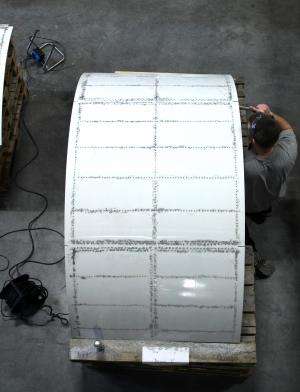Recycling aircraft more efficiently

The aviation industry is constantly evolving so that it can design lighter aircraft, reduce consumption and emissions and put in place more efficient recycling systems that allow the valuable materials used to build aircraft to be reused.
This is the research context in which the European SENTRY project is positioned; it is an initiative being led by the Basque IK4 R&D Alliance, and is part of the ambitious Clean Sky programme a public-private partnership between the European Commission (EC) and the Aeronautical Industry, set up to bring significant step changes regarding the environmental impact of aviation.
The project sets out to conduct the differentiated recycling of alloys used to manufacture aircraft test panels built into a fuselage so that the materials used do not get diverted towards products of lower added value and can once again be incorporated into what was once their original application without loss of properties.
Right now, despite the fact that the panels are made up of different materials, the recycling process is done in a collective way. This means that the raw materials are not recycled in a completely efficient way.
"It's about closing the circle so that the materials can go on being incorporated into the same application and achieve the highest degree of recycling," explained the project coordinator Sixto Arnaiz.
The expert added that the recycling process specified allows each of the aluminium alloys used to manufacture these panels to be recovered separately; these materials are so specific that they cannot be mixed with others if the aim is to fully preserve their properties. This is the case in particular of the alloys containing lithium, which is "highly reactive and which gives them their lightweight quality."
Furthermore, leading world companies like the French aviation company Dassault Aviation and the Israeli IAI, Constellium a global manufacturer of aluminium products and the Dutch AELS, a specialist in end-of-life aircraft recycling, are playing a significant role in the project, in which the specification and methodological analysis phase has already been completed.
"We've done the theoretical part and what remains now is to put it into practice and check that what have been specified functions well," added Arnaiz.
As far as Arnaiz is concerned, the incorporation and design of new solutions in the aviation sector, such as the use of new alloys or lighter panels, has to meet the technical as well as environmental requirements, so it is one of the key goals of the Eco-design area in the Clean Sky programme.
The project has a budget of 300,000 Euros, 75% of which is being provided by the European Commission through the 7th Framework Programme. Set to take 16 months, it kicked off last year and is expected to present its conclusions at the end of July.
Provided by Elhuyar Fundazioa




















